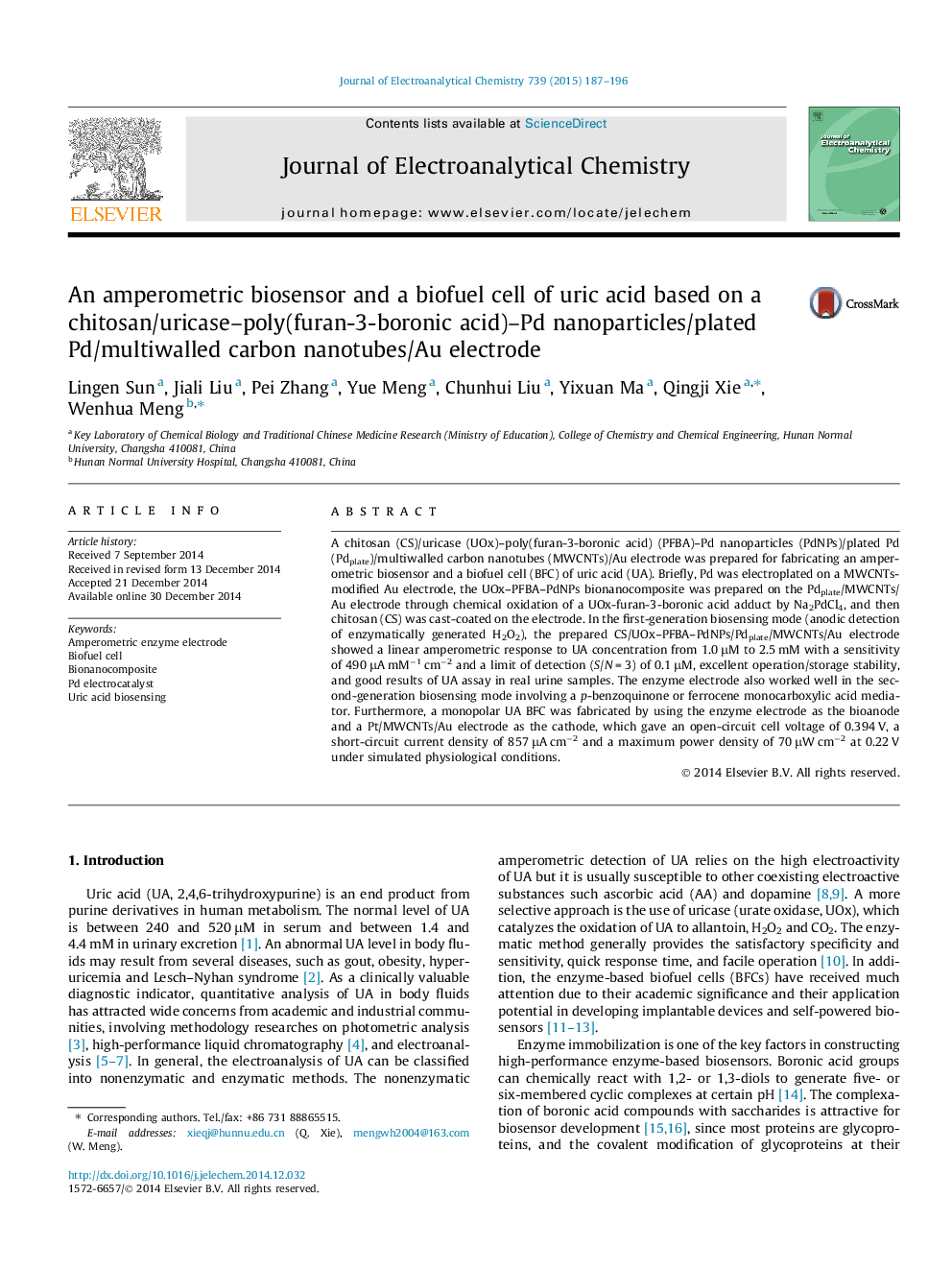| Article ID | Journal | Published Year | Pages | File Type |
|---|---|---|---|---|
| 218557 | Journal of Electroanalytical Chemistry | 2015 | 10 Pages |
•Preparation of uricase–poly(furan-3-boronic acid)–Pd nanoparticles bionanocomposite.•Pd electrocatalysis.•Excellent first-/second-generation biosensing performance for uric acid.•High-performance uric acid/O2 biofuel cell.
A chitosan (CS)/uricase (UOx)–poly(furan-3-boronic acid) (PFBA)–Pd nanoparticles (PdNPs)/plated Pd (Pdplate)/multiwalled carbon nanotubes (MWCNTs)/Au electrode was prepared for fabricating an amperometric biosensor and a biofuel cell (BFC) of uric acid (UA). Briefly, Pd was electroplated on a MWCNTs-modified Au electrode, the UOx–PFBA–PdNPs bionanocomposite was prepared on the Pdplate/MWCNTs/Au electrode through chemical oxidation of a UOx-furan-3-boronic acid adduct by Na2PdCl4, and then chitosan (CS) was cast-coated on the electrode. In the first-generation biosensing mode (anodic detection of enzymatically generated H2O2), the prepared CS/UOx–PFBA–PdNPs/Pdplate/MWCNTs/Au electrode showed a linear amperometric response to UA concentration from 1.0 μM to 2.5 mM with a sensitivity of 490 μA mM−1 cm−2 and a limit of detection (S/N = 3) of 0.1 μM, excellent operation/storage stability, and good results of UA assay in real urine samples. The enzyme electrode also worked well in the second-generation biosensing mode involving a p-benzoquinone or ferrocene monocarboxylic acid mediator. Furthermore, a monopolar UA BFC was fabricated by using the enzyme electrode as the bioanode and a Pt/MWCNTs/Au electrode as the cathode, which gave an open-circuit cell voltage of 0.394 V, a short-circuit current density of 857 μA cm−2 and a maximum power density of 70 μW cm−2 at 0.22 V under simulated physiological conditions.
